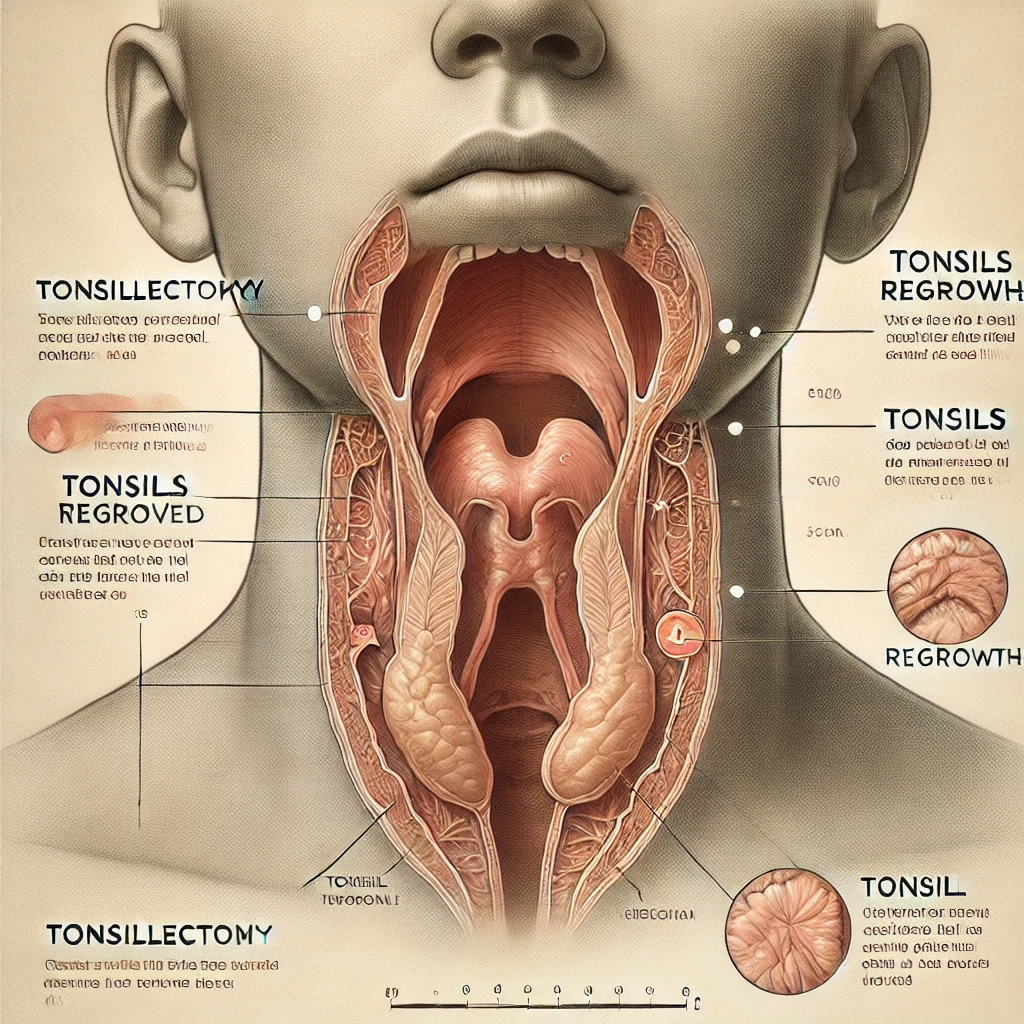Tonsillectomy, the surgical removal of the tonsils, is a common procedure performed to address chronic tonsillitis, sleep apnea, or other related medical conditions. While the idea of completely removing the tonsils suggests that they would never return, many patients and individuals are surprised to learn that tonsils can, in some cases, grow back. This leads to the pressing question: can tonsils grow back after being removed? Let’s dive into the science and nuances behind this phenomenon to provide clarity.
What Are Tonsils and Why Are They Removed?
Tonsils are small, oval-shaped masses of lymphatic tissue located at the back of the throat. They are part of the body’s immune system, acting as the first line of defense against pathogens entering through the mouth or nose. Tonsils help trap bacteria and viruses, playing an essential role in immune response, particularly in children.
However, for some individuals, tonsils can become more problematic than beneficial. Chronic inflammation, frequent infections, or conditions like obstructive sleep apnea often necessitate their removal. A tonsillectomy is typically recommended in cases where:
- Tonsillitis occurs frequently (usually defined as seven or more episodes in a year).
- Enlarged tonsils obstruct breathing or swallowing.
- Abscesses or other complications arise from recurrent infections.
The decision to remove tonsils is not made lightly, as their absence means a slight reduction in the immune system’s efficiency. However, the benefits of improved quality of life often outweigh the risks of recurring illnesses or complications.
Can Tonsils Really Grow Back?
The simple answer is yes, tonsils can grow back, although it is a rare occurrence. To understand this better, it is crucial to know what happens during a tonsillectomy. Surgeons generally remove most of the tonsillar tissue, but it is challenging to eliminate every single cell. The small remnants of lymphatic tissue that remain can regenerate and grow over time, potentially leading to the reappearance of tonsils.
This regrowth is not equivalent to the original size or function of the tonsils before surgery. The regenerated tissue is often smaller and less significant in terms of immune function. The extent of regrowth varies from person to person and is influenced by several factors, including age, immune response, and the surgical technique used.
Factors Influencing Tonsil Regrowth
Tonsil regrowth is uncommon, but when it does occur, it can be attributed to the following factors:
- Incomplete Removal: During a tonsillectomy, surgeons focus on removing the bulk of the tonsillar tissue. However, it is nearly impossible to remove every cell. The remaining lymphatic tissue has the potential to regrow.
- Age: Younger patients, particularly children, are more likely to experience regrowth of tonsils compared to adults. This is because children have a more active immune system, and their bodies are still developing.
- Immune Activity: The lymphatic system, of which tonsils are a part, remains active throughout a person’s life. If the body perceives a need for additional immune response, the remaining tissue may grow to compensate for the loss.
- Surgical Technique: The method of tonsillectomy can influence the likelihood of regrowth. For instance, a partial tonsillectomy, where some tissue is intentionally left behind to reduce complications, has a higher chance of regrowth compared to a complete removal.
Signs That Tonsils May Have Grown Back
For those who have undergone a tonsillectomy, it may come as a surprise to experience symptoms similar to those before surgery. While rare, signs that tonsils might have regrown include:
- Sore throat or persistent discomfort.
- Swelling or visible lumps in the throat.
- Difficulty swallowing.
- Recurrent infections, similar to tonsillitis.
If you notice these symptoms, it is important to consult an ENT (ear, nose, and throat) specialist. They can perform an examination to confirm whether tonsillar tissue has indeed regrown and assess whether further intervention is necessary.
Is Tonsil Regrowth a Cause for Concern?
For most individuals, tonsil regrowth is not a significant issue. The regrown tissue is typically much smaller and less prone to infection than the original tonsils. However, in rare cases, regrowth can lead to recurrent problems such as infections, breathing difficulties, or sleep apnea, necessitating medical attention.
If regrowth becomes problematic, a second tonsillectomy may be considered. It’s worth noting that subsequent surgeries are less common and are typically recommended only if the regrown tissue causes significant health issues.
Preventing Tonsil Regrowth: Is It Possible?
Given that some tissue remnants are inevitable after a tonsillectomy, preventing tonsil regrowth entirely is challenging. However, choosing an experienced surgeon and discussing the most effective surgical method can reduce the likelihood of significant regrowth. Additionally, maintaining good overall health and addressing infections promptly can help minimize complications if any regrowth occurs.
Comparing Complete and Partial Tonsillectomy
There are two main approaches to tonsillectomy: complete and partial removal. Each has its pros and cons, particularly in relation to the possibility of regrowth.
- Complete Tonsillectomy: This method aims to remove as much tonsillar tissue as possible. It is associated with a lower likelihood of regrowth but may have a longer recovery time and higher risk of complications such as bleeding.
- Partial Tonsillectomy: In some cases, only part of the tonsils is removed to alleviate symptoms while preserving some immune function. This approach has a higher chance of regrowth but is associated with reduced pain and faster recovery.
Discussing these options with your surgeon can help determine the most suitable approach based on your specific condition and medical history.
Final Thoughts on Tonsil Regrowth
The question, “can tonsils grow back after being removed?” highlights an intriguing aspect of human biology. While tonsil regrowth is rare, it is not impossible. Understanding the factors that contribute to this phenomenon can help patients make informed decisions about their health and manage any concerns effectively.
For those considering a tonsillectomy or dealing with symptoms of potential regrowth, consulting with a qualified healthcare provider is essential. They can provide tailored advice, ensure accurate diagnosis, and recommend appropriate treatment options. Ultimately, the benefits of a tonsillectomy in reducing chronic health issues far outweigh the rare possibility of regrowth, making it a valuable procedure for many individuals.
In summary, while tonsils can grow back to some extent after removal, the occurrence is generally minimal and rarely causes significant problems. With proper medical guidance and care, most patients can enjoy the long-term benefits of a tonsillectomy without major concerns.



